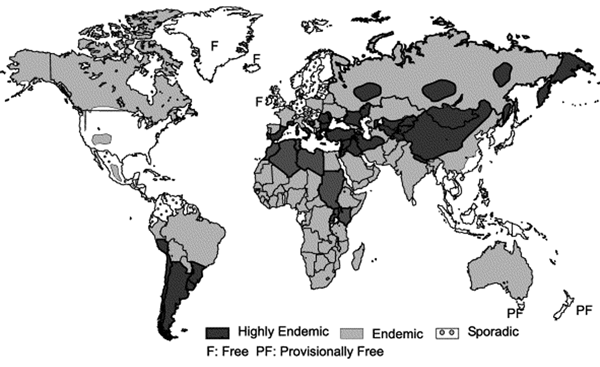Echinococcus granulosus
A Parasitic Tapeworm
Habitat
Geographically, E. granulosus is found almost worldwide. However, it is more prevalent in rural areas with lots of area for grazing. The greatest prevalence of human infection happens in areas where large amounts sheep and cattle are found. The highest concentration of E. granulosus is found in Asia, Africa, Australia, Europe and South America.
In order for the parasitic life cycle of E. granulosus to be perpetuated, the organism must also be present where the definitive hosts have the opportunity to ingest organs from the infected, intermediate hosts. The eggs of this particular parasite are very resistant to environmental stresses allowing it to live almost wherever their hosts are present. Although they can survive freezing conditions, they are vulnerable to heat and desiccation. Cool, damp conditions increase the survival time of the eggs.
The adult form of E. granulosus
is found in the small intestine of their definitive host.
The definitive host is generally a canine such as dogs,
wolves, coyotes, and even dingoes, it has also been found in
lions. The larval form of E.
granulosus is found in various organs of the
intermediate host. It can be found in the
lungs, liver, spleen, skeletal muscle, eye, and brain
tissues of the various hosts.
Intermediate hosts include deer, sheep, moose, reindeer,
cattle and humans.
Due to this type of habitat both the intermediate hosts and
the definitive hosts are directly responsible for the uptake
of nutrition in E.
granulosus.
